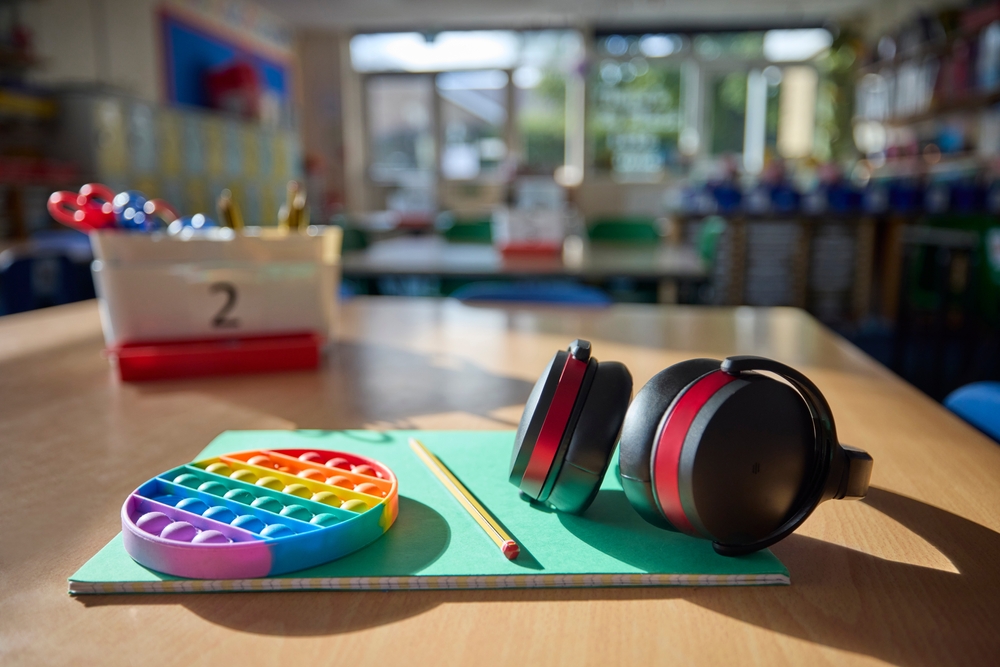What is sensory overload in autism, what causes it, and what can you do to manage and avoid it? Read this blog to find out what you need to know.
Autism, or ASD, is a disorder that impacts roughly 1 in every 100 people around the world to varying degrees. This disorder can be challenging in many different ways, with differences in manifestation in boys and girls, but one issue that many, if not all, autistic people have to deal with is sensory overload. However, what is sensory overload in Autism, what causes it, and how can you manage it?
Sensory overload in autism occurs when the brain is overwhelmed by sensory input, leading to heightened anxiety or distress. Common triggers include loud noises, bright lights, and crowded environments.
Here at The Brain Workshop, we are dedicated to helping you understand disorders such as ASD and ADHD to ensure that you get the support you need. We look at topics such as echolalia, sleep disorders, and how you can support loved ones who need it.
What is Sensory Overload in Autism?

Sensory overload can be described as an intense feeling of overwhelm that occurs when the brain receives too much information from various senses that it cannot properly process. This includes sight, taste, smell, sound, or touch. In people with autism, sensory overload can trigger panic, anxiety, and in some cases, a meltdown, where individuals can have an involuntary reaction as a response.
When someone is experiencing sensory overload, they will be more sensitive to smells, sounds, textures, and more. This can mean that they will have an adverse reaction to bright lights, bad smells, unpleasant textures, and so on, which can increase feelings of anxiety and agitation. As a result, this all has the potential to lead to physical discomfort, irritability, and difficulty with concentration, which can make everyday life more challenging.
Below are some common sensory overload triggers in autistic individuals:
- Changes in the set routine
- Fatigue can more sensory overload more likely
- Unpleasant, strong, or unfamiliar smells and tastes
- Touch and texture sensitivities
- Too much visual information
- Loud and/or disruptive noises (including background noises)
Why Autism and Sensory Overload are Linked
Many autistic people have sensory processing issues, and this can heavily play into anxiety for a lot of people, even when the stimulus is seemingly small or mild. Autistic people can be hypersensitive or hyposensitive to a range of stimuli.
This means that they will have either an over-responsive reaction or an under-responsive reaction to different stimuli, respectively. It is very common for them to have a combination of both, so please remember to look out for differences and take note of both sensitivity types.
Signs and Symptoms of Sensory Overload in Autism
Sensory overload can look different in everyone, and there is no one rule that should be applied to everyone to say if they are experiencing sensory overload or not. However, there are a number of signs that you can look out for that will help to determine if someone is experiencing this. Let’s go through what you can look out for below.
Top 7 signs of sensory overload in Autism:
- Extreme fatigue
- More irritable
- Urge to block different senses or sensory experiences
- Feelings of restlessness
- Physical discomfort
- Heightened need to self-stimulate
- Feeling ‘wound up’
If you think someone is experiencing sensory overload, you might see the following behaviours:
- Covering ears or eyes
- Not talking, talking faster, or talking louder
- Moving around more (spinning, jumping, etc)
- Often chewing on non-edible or non-food items
- Frequently playing rough or touching other people
- More stimming behaviours (swaying, rocking, hand flapping, repeating noises, etc)
- Refusing to or insisting on wearing particular items of clothing or eating particular foods
- Trouble recognising sensations in the body (hunger, shirt, need to use the toilet, pain, etc)
- Having trouble responding or communicating when the brain shifts all resources to handle the sensory input (this is called a shutdown)
- The need to escape a situation or experiencing overwhelming and escalating emotions (this is called a meltdown)
Can You Avoid Sensory Overload?

You can do your best to reduce the possibility of experiencing sensory overload, but it’s impossible to do everything to avoid it completely. If you know someone with autism, you should work to try and make their environment as comfortable as possible and do sensory management.
We will go through some options that you can try to avoid sensory overload below, but please remember that life is full of surprises, and you can never account and plan for them all.
Creating a Sensory-Friendly Environment
This can be challenging depending on personal circumstances, as creating sensory-friendly environments in places like schools can almost be impossible without assistance. However, it’s imperative to do everything you can to make your environment as welcoming as possible, especially at home.
To do this, you might want to consider:
- Using soft lights
- Having noise-cancelling headphones
- Wearing your favourite jumper
Anything that you can do to remove and reduce unpleasant sensory feelings will help to prevent sensory overload, and this is not something that anyone should have to feel guilty about.
How to Manage Sensory Overload

Since avoiding all unpleasant situations and senses is not possible, it’s important to develop sensory management. This could mean wearing sunglasses in various environments, using earplugs or noise-cancelling headphones, or using other sensory tools to help create a space that is better for your senses.
If you are hypersensitive, there are a number of things that you can do to try and make your life a bit easier. Below are a few ideas that you can incorporate if you experience hypersensitivity to stimuli:
- Avoid using products that have very strong scents
- Wear earplugs or headphones when in a noisy space
- Prioritise comfortable clothing and accessories at all times
- Do your work where there are closed doors and high walls
- Adjust your schedule to try and avoid large and noisy crowds
- Avoid foods that have tastes or textures that you strongly dislike
- Wear sunglasses or even a hat when under or around strong lighting
Hyposensitivity (opposite of hypersensitivity) means that instead of being overstimulated by certain stimuli, you are instead understimulated. Once again, this will vary from person to person, so you need to find out what your hyposensitivities are in order to take action.
For some people, hyposensitivity accommodations could include:
- Taking breaks often to go around and move
- Utilise sensory tools like chewies or fidget toys
- Move furniture to allow for open and safe spaces
- Eating and drinking things with strong flavours and varied textures
- Using products that provide deep pressure, such as weighted blankets
- Using visual supports if you have difficulty with processing audio information
Can Therapy Help Reduce or Avoid Sensory Overload?
While sensitivities are not something that you can truly get rid of, there are things that you can do to try and help your child or loved one work through sensory processing issues. Sensory Integration Therapy (SI), which can be done by occupational therapists, can help to ‘rewire’ the brain to help children integrate and respond to sensory input in a more ‘appropriate’ way. This can help them overcome some sensory issues to help them feel safer and more at ease in the world around them while reducing anxiety.
With that being said, SI might not be appropriate for everyone, and it may not work for all individuals. We encourage anyone who considers this approach to do their due diligence first and communicate with practitioners and your children or loved ones.
Another option is cognitive behavioural therapy (CBT). This is widely-accepted therapy that can help with framing the way you think and challenge thoughts, but some autistic individuals find this challenging for a variety of factors.
How The Brain Workshop Supports Sensory Processing in Autism

Sensory overload can be debilitating for many people with autism, and it is not always easy to work around and manage. However, once you start to understand what causes it, you can begin to plan or manage your life in a way that is less stressful and more fulfilling.
Looking for expert strategies to manage sensory overload in autism? Contact The Brain Workshop today for personalized support and therapies designed to help individuals thrive.
If you would like to learn more, please don’t hesitate to contact us at the Brain Workshop and find out more about us, our team, events, or even read our FAQ. If you want to find out more about ASD, why not have a look at our blogs on how to parent a child with ADHD and autism, if ASD is a learning disability, the difference between Asperger and autism, or learn about 10 iconic autistic fictional characters.






